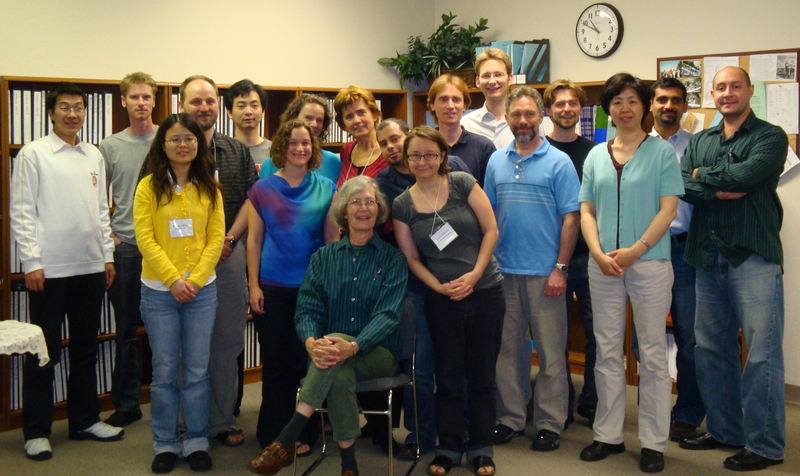
at the
American Institute of Mathematics, San Jose, California
organized by
Zhilan Feng and Priscilla Greenwood
Some typical problems which require explicitly spatial modeling are: How fast and in what patterns does an epidemic spread? How does the spatial form of local communities effect the coexistence of species which may be competing for resources, or involved in other kinds of ecological interactions?
An hypothesis that underlies much spatial modeling is that individuals interact only with their neighbors, or occasionally over a distance, but not uniformly with all other individuals. This hypothesis allows us to model evolution of interacting populations living in spatially explicit habitats or moving. In several examples, critical values are raised above their values for analogous uniformly mixed populations. Whereas stochasticity may not change critical values, focus on probability distributions broadens our decision space to include the variety of possible behaviors of a population system and the likelihoods associated with these possibilities.
The workshop schedule.
A report on the workshop activities.